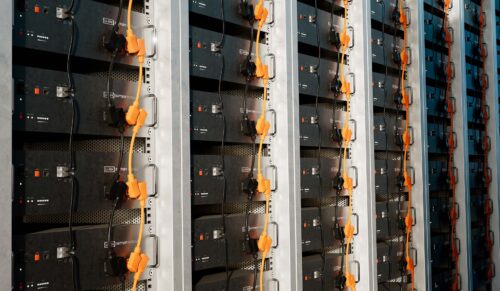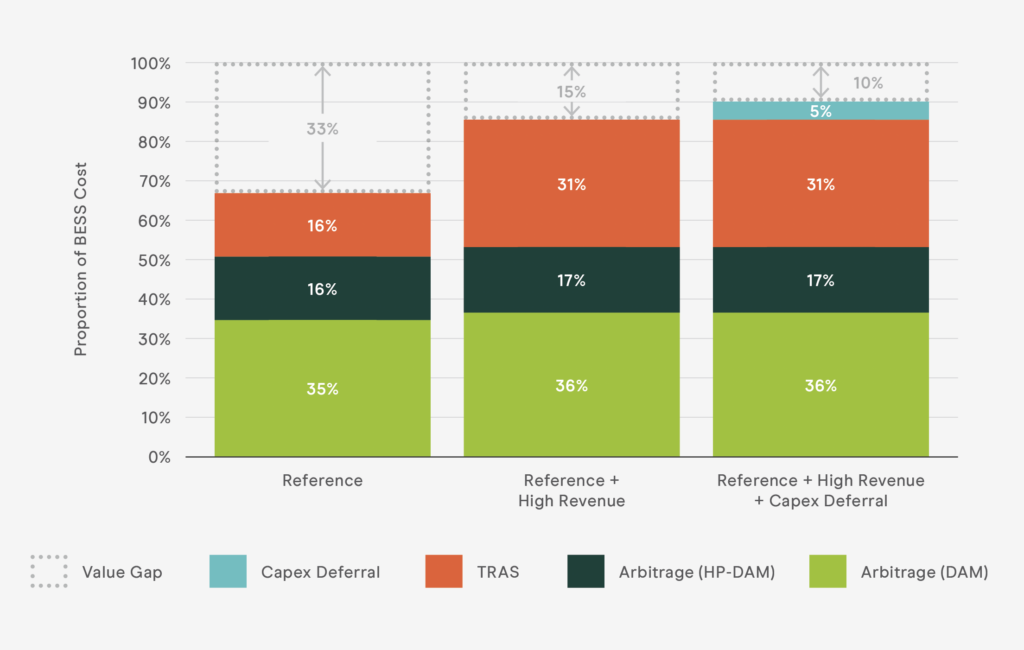
Report | 2023
Powering Progress: Batteries for Discoms
A Market Action Report on Accelerating Battery Energy Storage in India
India’s power system is shifting to a new phase as universal electricity access is achieved, economic growth continues to drive electricity demand, and over 125 gigawatts (GW) of renewable energy resources have been deployed. Building out sufficient energy storage will be essential for India’s grid to successfully integrate increasing generation from renewable resources and to meet future load demands. Achieving a reliable, resilient, and flexible grid will require a projected deployment of approximately 60 GW of energy storage, 42 GW (208 GWh) of which will be supplied by battery energy storage system (BESS) capacity by 2030.
The Government of India has taken several policy steps laying the groundwork for an enabling environment for energy storage. These policies have included defining energy storage systems, extending key renewable energy generator benefits to energy storage assets, providing subsidies, supporting market development, and setting procurement targets. The National Framework for Promoting Energy Storage Systems, released by the Ministry of Power in August 2023, details these policies and represents a step towards creating a comprehensive national roadmap for accelerating storage development in the coming years. Establishing the full value streams for BESS will require India’s power system stakeholders to operationalize the national framework — shifting from national guidelines to accelerated adoption, planning, and integration of BESS projects across the power system.
The Powering Progress: Batteries for Discoms report explores the market opportunity for front-of-meter BESS within India, with an emphasis on the power distribution sector and distribution companies (Discoms). Distribution-located storage (DLS) can contribute to the duties of Discoms by providing benefits in terms of distribution system capacity deferral at the substation level, particularly in dense urban areas experiencing peak load increases where there is limited space to expand the physical footprint of the distribution system. DLS can also meet Discoms’ portfolio needs by providing resource adequacy value and minimizing Deviation Settlement Mechanism penalties and voltage support. BESS can meet grid balancing needs by participating in wholesale markets such as energy arbitrage and ancillary services.
At present, many of these value streams are not fully monetizable. While the long-term value propositions could be favorable to a Discom investing in DLS (as compared with other alternatives that may increase overall system costs), the inability to accurately assess future revenue streams is inhibiting project approval. Furthermore, insufficient institutional knowledge of how to assess BESS projects is slowing down state electricity regulatory commissions (SERCs) in approving DLS proposals. To ensure rapid deployment of battery storage to meet system needs as costs decline, it is essential that stakeholders, including Discoms and regulators, are informed of BESS value and have strategies to effectively procure and utilize storage technologies.
Exhibit 1: Current Economic Value Gap and Levers to Reduce It for Illustrative 10 MW (20 MWh) BESS

As India shifts from improving electricity access to improving quality of electricity service and reliability, new regulatory frameworks and business models need to be developed and implemented to support these needs. Discoms have a unique opportunity to play a role in integrating BESS into their portfolios. These actions are the next steps in improving the conditions for deploying innovative technology solutions that will help India become a global leader, successfully integrate renewables to meet growing demand, and provide a model of energy transition to the world.